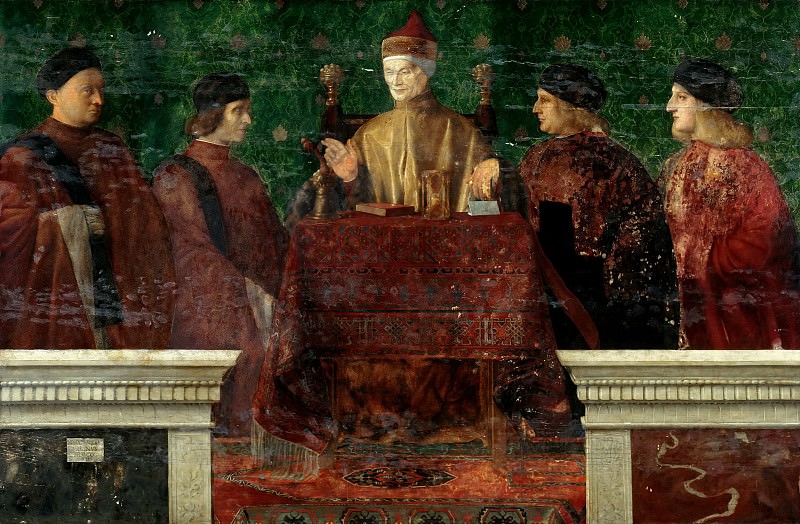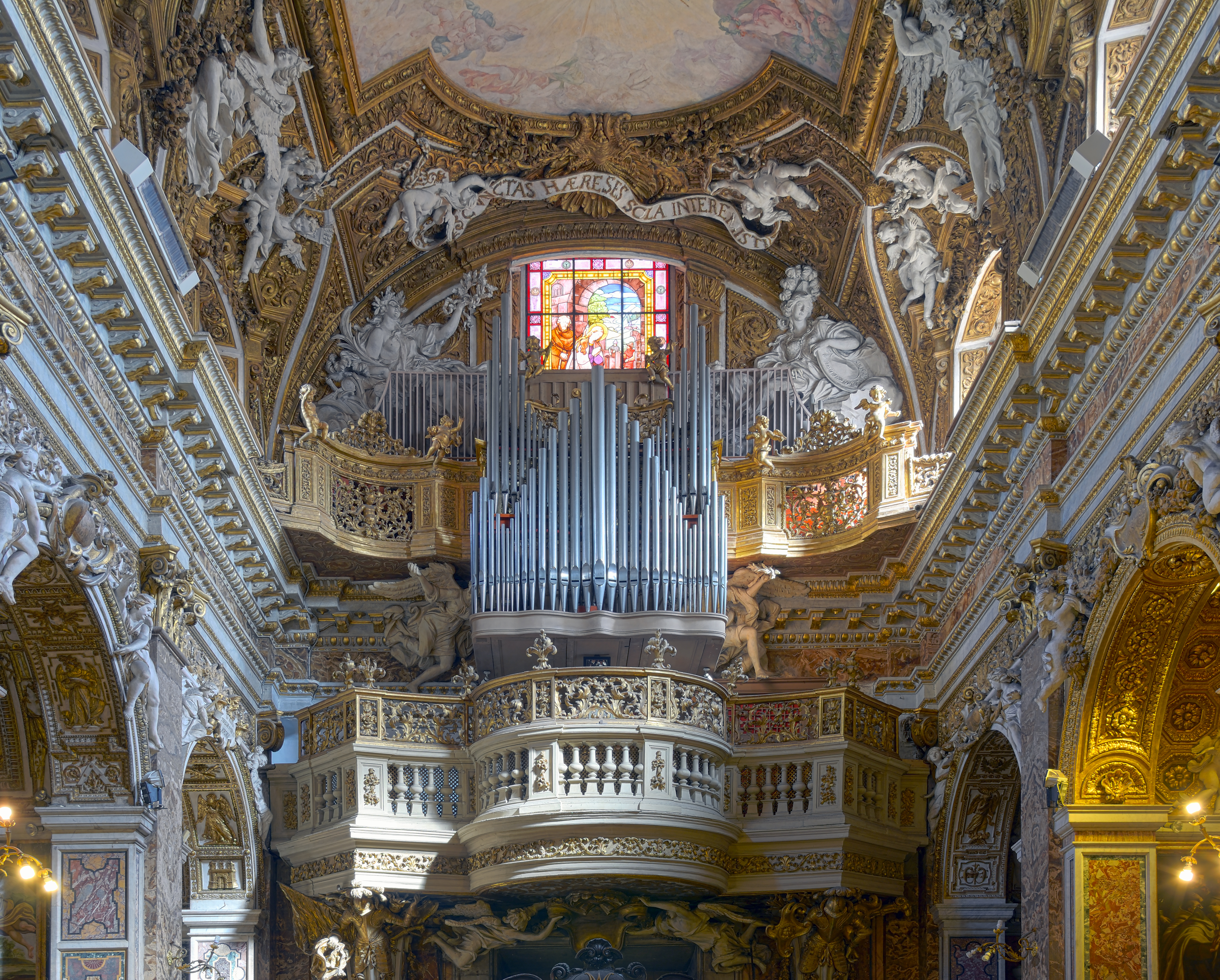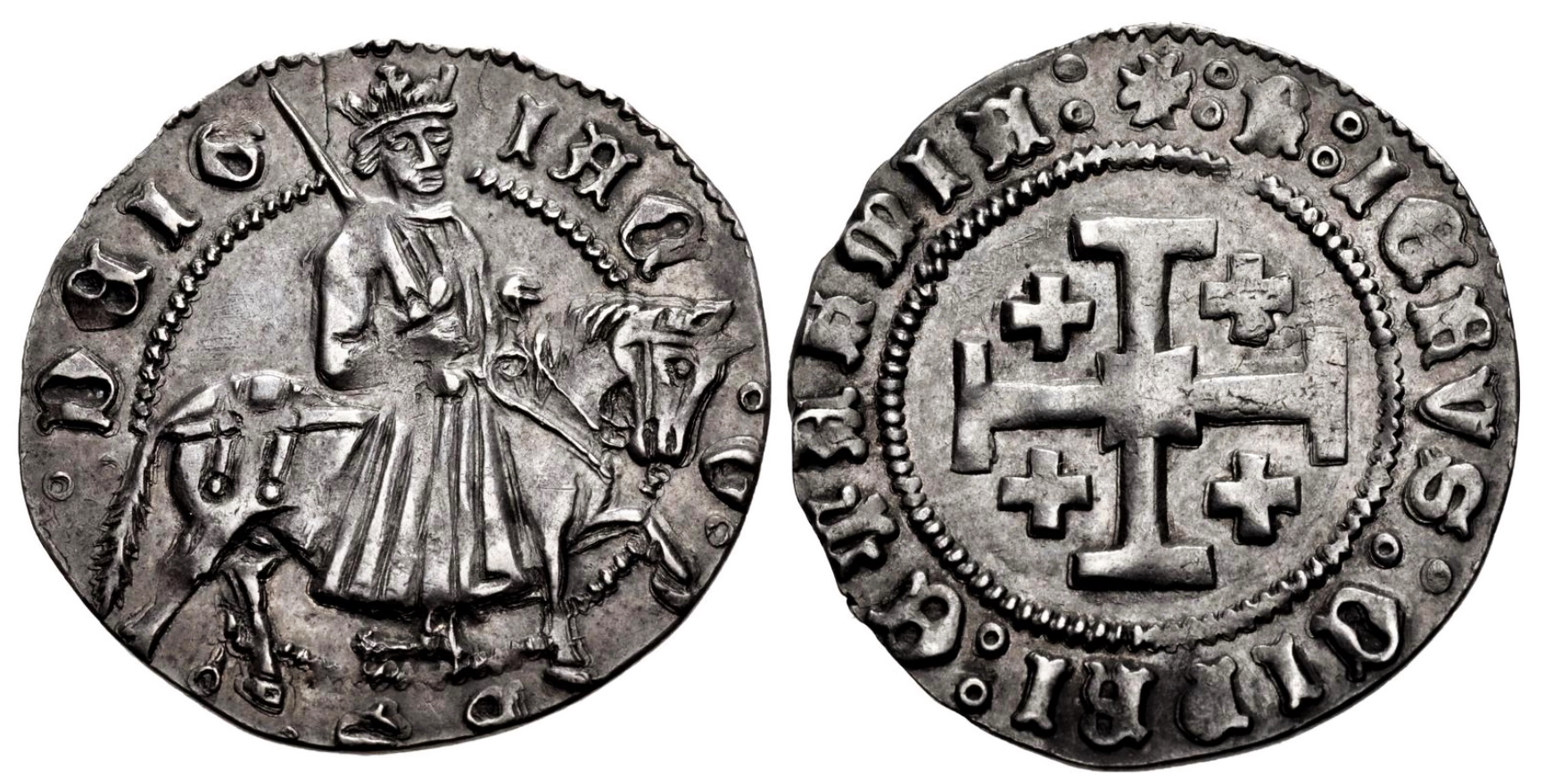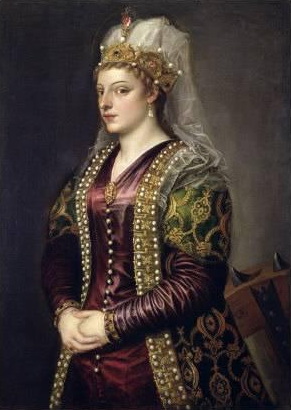|
Cornaro
The House of Cornaro or Corner are a family in Venice who were patricians in the Republic of Venice and included many Doges and other high officials. The name ''Corner'', originally from the Venetian dialect, was adopted in the eighteenth century. The older standard Italian ''Cornaro'' is no longer common in Italian sources referring to earlier members of the family, but remains so in English. History The family and name Cornaro are said to descend from the gens Cornelia, a patrician family of Ancient Rome. The Cornari were among the twelve tribunal families of the Republic of Venice and provided founding members of the Great Council in 1172. In the 14th century, the family separated into two distinct branches, Cornaro of the Great House and Cornaro Piscopia. The latter name derived from the 1363 grant of the fief of Piscopia in the Kingdom of Cyprus to Federico Cornaro. When Caterina Cornaro married king James II of Cyprus in 1468, the Lusignan royal arms were added to ... [...More Info...] [...Related Items...] OR: [Wikipedia] [Google] [Baidu] |
Venetian Patriciate
The Venetian patriciate ( it, Patriziato veneziano, vec, Patrisiato venesian) was one of the three social bodies into which the society of the Republic of Venice was divided, together with citizens and foreigners. was the Imperial, royal and noble ranks, noble title of the members of the Aristocracy (class), aristocracy ruling the city of Venice and the Republic. The title was abbreviated, in front of the name, by the initials N.H. / N.D., N.H. ( or ), together with the feminine variant N.H. / N.D., N.D. (). Holding the title of a Venetian patrician was a great honour and many European kings and princes, as well as foreign noble families, are known to have asked for and obtained the prestigious title. The patrician houses, formally recorded in the Libro d'Oro, Golden Book, were primarily divided into Old Houses () and New Houses (), with the former being noted for traditionally electing the List of Doges of Venice, first Doge in 697 AD. The New Houses were no less significant, ... [...More Info...] [...Related Items...] OR: [Wikipedia] [Google] [Baidu] |
Caterina Cornaro
Catherine Cornaro ( el, Αικατερίνη Κορνάρο, vec, Catarina Corner) (25 November 1454 – 10 July 1510) was the last monarch of the Kingdom of Cyprus, also holding the titles of the Queen of Jerusalem and Armenia. She was queen consort of Cyprus by marriage to James II of Cyprus, regent of Cyprus during the minority of her son James III of Cyprus in 1473–1474, and finally queen regnant of Cyprus. She reigned from 26 August 1474 to 26 February 1489 and was declared a "Daughter of Saint Mark" in order that the Republic of Venice could claim control of Cyprus after the death of her husband, James II. Life Catherine was a daughter of Venetian Marco Cornaro, Cavaliere del Sacro Romano Impero (Knight of the Holy Roman Empire) and Fiorenza Crispo. She was the younger sister of the ''Nobil Huomo'' Giorgio Cornaro (1452 – 31 July 1527), "Padre della Patria" and Knight of the Holy Roman Empire. The Cornaro family had produced four Doges. Her family had long associat ... [...More Info...] [...Related Items...] OR: [Wikipedia] [Google] [Baidu] |
Ecstasy Of St Theresa
The ''Ecstasy of Saint Teresa'' (also known as ''Saint Teresa in Ecstasy'' or the ''Transverberation of Saint Teresa''; it, L'Estasi di Santa Teresa or ) is a sculptural group in white marble set in an elevated aedicule in the Cornaro Chapel of the church of Santa Maria della Vittoria in Rome. It was designed and completed by Gian Lorenzo Bernini, the leading sculptor of his day, who also designed the setting of the Chapel in marble, stucco and paint. It is generally considered to be one of the sculptural masterpieces of the High Roman Baroque. The sculpture depicts Teresa of Ávila, a Spanish Carmelite nun and saint, swooning in a state of religious ecstasy, while an angel holding a spear stands over her. Commission The entire ensemble was overseen and completed by a mature Bernini during the Pamphili papacy of Innocent X. When Innocent acceded to the papal throne, he shunned Bernini's artistic services; the sculptor had been the favourite artist of the previous and profliga ... [...More Info...] [...Related Items...] OR: [Wikipedia] [Google] [Baidu] |
Episkopi, Limassol
Episkopi ( el, Επισκοπή, tr, Piskobu) is a village lying partly in the Limassol district of Cyprus and partly in the British Overseas Territory of Akrotiri and Dhekelia. It is approximately west of Limassol and east of Paphos. Episkopi is built on the hill of ancient Kourion, close to the western bank of the Kouris River. In the medieval Kingdom of Cyprus, Episkopi was granted in fief to the House of Ibelin. It was in the hands of Federico Cornaro (died 1382), Federico Cornaro of the Republic of Venice from 1367 and granted to him in 1374 by the indebted king.; It was known as La Piscopia da Cornaro, and the branch of the Cornaro family descended from Federico became known as ''Cornaro Piscopia''. The Cornaros ran a large sugar plantation in their fief near Episkopi that employed slaves of Syrian or Arab origin or local serfs. Twin towns – sister cities Episkopi is Twin towns and sister cities, twinned with: * Argos, Peloponnese, Argos, Greece References External ... [...More Info...] [...Related Items...] OR: [Wikipedia] [Google] [Baidu] |
Federico Cornaro (died 1382)
Federico Cornaro or Corner (died 1382) was a 14th-century Venetian patrician, merchant and politician. In 1379, he was accounted the richest man in Venice, having become wealthy from his sugar plantations in Cyprus. He used this wealth to buy his son a marriage with the heiress of the Lordship of Argos and Nauplia in Greece, which he ''de facto'' ruled in their name until his death. Relations with the Kingdom of Cyprus The exact date of his birth and his early career are unknown, and difficult to reconstruct due to the presence of namesake figures of the wider House of Cornaro at the same time. Around the middle of the 14th century, he bought the palazzo now known as the Ca' Loredan, which today houses the municipal council of Venice. There he hosted Albert III, Duke of Austria during his visit in 1361, as well as King Peter I of Cyprus a short while after. The latter event resulted in a close relationship between the two men. Federico received lands and honours—membership in ... [...More Info...] [...Related Items...] OR: [Wikipedia] [Google] [Baidu] |
Bernini
Gian Lorenzo (or Gianlorenzo) Bernini (, , ; Italian Giovanni Lorenzo; 7 December 159828 November 1680) was an Italian sculptor and architect. While a major figure in the world of architecture, he was more prominently the leading sculptor of his age, credited with creating the Baroque style of sculpture. As one scholar has commented, "What Shakespeare is to drama, Bernini may be to sculpture: the first pan-European sculptor whose name is instantaneously identifiable with a particular manner and vision, and whose influence was inordinately powerful ..." In addition, he was a painter (mostly small canvases in oil) and a man of the theater: he wrote, directed and acted in plays (mostly Carnival satires), for which he designed stage sets and theatrical machinery. He produced designs as well for a wide variety of decorative art objects including lamps, tables, mirrors, and even coaches. As an architect and city planner, he designed secular buildings, churches, chapels, and publi ... [...More Info...] [...Related Items...] OR: [Wikipedia] [Google] [Baidu] |
Santa Maria Della Vittoria, Rome
Santa Maria della Vittoria ( en, Saint Mary of Victory, la, S. Mariae de Victoria) is a Catholic titular church and basilica dedicated to the Virgin Mary in Rome, Italy. The church is known for the masterpiece of Gian Lorenzo Bernini in the Cornaro Chapel, the '' Ecstasy of Saint Teresa''. The church is in the Rione Sallustiano, on number 98 via XX Settembre, where this street intersects with Largo Santa Susanna. It stands to the side of the Fontana dell'Acqua Felice. The church mirrors the Church of Santa Susanna across the Largo. It is about two blocks northwest of the Piazza della Repubblica and Teatro dell'Opera metro stop. History The land for the church was purchased on April 20, 1607, and built from 1608 to 1620, as a chapel dedicated to Saint Paul for the Discalced Carmelites. After the Catholic victory at the battle of White Mountain in 1620, which reversed the Reformation in Bohemia, the church was rededicated to the Virgin Mary. Turkish standards captured at the 168 ... [...More Info...] [...Related Items...] OR: [Wikipedia] [Google] [Baidu] |
Kingdom Of Cyprus
The Kingdom of Cyprus (french: Royaume de Chypre, la, Regnum Cypri) was a state that existed between 1192 and 1489. It was ruled by the French House of Lusignan. It comprised not only the island of Cyprus, but it also had a foothold on the Anatolian mainland: Antalya between 1361 and 1373, and Corycus between 1361 and 1448. History Third Crusade Richard confiscated the property of those Cypriots who had fought against him. He also imposed a 50% capital levy on the island in return for confirming its laws and customs. He also ordered Cypriot men to shave their beards. There was a rebellion led by a relative of Isaac's, but it was crushed by Robert of Thornham, who hanged the leader. Richard rebuked Robert for this execution, since executing a man who claimed to be king was an affront to royal dignity. Some details of the brief English period on Cyprus can be found in the '' Chronicle of Meaux Abbey'', possibly derived from Robert of Thornham, who had a relationship with the a ... [...More Info...] [...Related Items...] OR: [Wikipedia] [Google] [Baidu] |
Scarpanto
Karpathos ( el, Κάρπαθος, ), also Carpathos, is the second largest of the Greek Dodecanese islands, in the southeastern Aegean Sea. Together with the neighboring smaller Saria Island it forms the municipality of Karpathos, which is part of the Karpathos regional unit. Because of its remote location, Karpathos has preserved many peculiarities of dress, customs and dialect, the last resembling those of Crete and Cyprus. The island has also been called Carpathus in Latin and Scarpanto in Italian. Etymology Homer calls the island Krapathos, with metathesis of two letters in the first syllable. Other names of the island include Tetrapolis and Anemoessa. Geography The island is located about southwest of Rhodes, in the part of the Mediterranean which is called the ''Carpathian Sea'' ( la, Carpathium Mare). The Sea of Crete, a sub-basin of the Mediterranean Sea, has its eastern limit defined by the island of Karpathos. Karpathos' highest point is Kali Limni, at . Karpathos ... [...More Info...] [...Related Items...] OR: [Wikipedia] [Google] [Baidu] |
Ca' Corner
Palazzo Corner della Ca' Granda, also called Ca' Corner della Ca' Granda or simply Palazzo Corner or Palazzo Cornaro, is a Renaissance-style palace located between the ''Casina delle Rose'' and the Rio di San Maurizio (Venice), across the Grand Canal from the Palazzo Venier dei Leoni (Peggy Guggenheim Collection), in the city of Venice, Italy. It is the current seat of the province of Venice and of the city's prefect. History The palace was designed by Jacopo Sansovino, after a fire that in 1532 had destroyed the previous residence of the Corner family. It was one of the first commissions received by the architect in Venice. The previous residence had been purchased by Giorgio Cornaro, brother of Caterina Cornaro from the Malombra family. In 1817, after another fire, Andrea Corner sold the palace to the Austrian Empire The Austrian Empire (german: link=no, Kaiserthum Oesterreich, modern spelling , ) was a Central-Eastern European multinational great power from 1 ... [...More Info...] [...Related Items...] OR: [Wikipedia] [Google] [Baidu] |
James II Of Cyprus
James II (french: Jacques; c. 1438/1439 or c. 1440 – 10 July 1473) was the penultimate King of Cyprus (usurper), reigning from 1463 until his death. Archbishop of Nicosia James was born in Nicosia as the illegitimate son of John II of Cyprus and Marietta de Patras. He was a great favourite of his father, and in 1456, at the age of 16, he was appointed to the archbishopric of Nicosia. After murdering Iacopo Urri, the royal chamberlain, on 1 April 1457, he was deprived of the archbishopric and fled to Rhodes on a ship of the Catalan Juan Tafures. He was pardoned by his father, and the archbishopric was returned to him. King of Cyprus In 1458, his father died, and his half-sister Charlotte became Queen of Cyprus. In 1460, with support from the Egyptian Mamluk sultan Sayf ad-Din Inal, James challenged her right to the throne, blockading her and her husband, Louis of Savoy, in the castle of Kyrenia for three years. When Charlotte fled to Rome in 1463, James was crowned king. ... [...More Info...] [...Related Items...] OR: [Wikipedia] [Google] [Baidu] |
Venetian Cyprus
The island of Cyprus was an overseas possession of the Republic of Venice from 1489, when the independent Kingdom of Cyprus ended, until 1570–71, when the island was conquered by the Ottoman Empire. History Acquisition Venice for centuries wanted to control Cyprus and Venetian merchants worked on the island beginning in 1000 AD, when the Venetian (commercial and military) expansion in the eastern Mediterranean had started. In 1468, James II of Cyprus of the house of Lusignan became King of Cyprus. In 1468, he chose Catherine Cornaro (born in Venice from the noble family of the "Corner") as his wife and Queen consort of Cyprus. The King's choice was extremely pleasing to the Republic of Venice, as it could henceforth secure the commercial rights and other privileges of Venice in Cyprus. They married in Venice on 30 July 1468 by proxy when she was 14 years old. James died soon after the wedding due to a sudden illness and, according to his will, Caterina, who at the time w ... [...More Info...] [...Related Items...] OR: [Wikipedia] [Google] [Baidu] |







